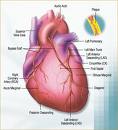
London: With the Olympics coming up, Britains athletes could find they have a secret weapon for success a plate of turkey meat.
Eating turkey could enhance an athletes performance by up to 20%, according to scientists. Turkey breast contains one of the highest concentrations of the muscle-building dipeptides, anserine & carnosine. When we eat a food containing these dipeptides it is broken down into beta-alanine and histidine. We all have plentiful supplies of histidine in the body, but it is beta-alanine we need to consume to counteract the effect of pH acidity that causes muscle fatigue, as the body is only able to manufacture small quantities from uracil in the liver.
Researchers at the University of Chichesters School of Sport, Exercise & Health Sciences carried out tests on the effect of consuming carnosine and beta-alanine on volunteers who underwent muscle biopsies and performance tests. The 800mg beta-alanine supplements they used, the equivalent to 145g portions of turkey breast meat, increased muscle concentrations by 40% and improved cycling performance by 13%.
Research leader Glenys Jones said: The exciting thing is, I believe we are nowhere near the top. In fact, I suspect if we raise the dietary intake of beta-alanine to 250-300g of turkey a day for 6-12 months we will see a progressive rise in the values of a possible 80% increase in muscle concentrations and further performance improvements, as seen in high-dose/short-term supplementation studies.
Jones is looking to start a longitudinal investigation into the effect on muscle concentrations of introducing a regular dose of turkey into the diet and the subsequent effect on performance in the very near future.
Sharron Davies, former Olympic swimmer and mother of three, says: “New dietary research is something all athletes welcome especially when the food recommended is as easy to obtain, cook and eat as turkey. When I was swimming competitively, I always included turkey in my diet because it’s low in fat and high in protein and even today, turkey remains an important part of my balanced diet. But even non-athletes should be interested in keeping their bodies as healthy as possible so this research could have positive benefits for very many people in all walks of life.”
Rowing, cycling, speed skating and certain distances in running are the other disciplines researchers say are most likely to benefit.
The research at Chichester University, overseen by Prof Roger Harris, discovered anserine and carnosine was high in certain muscle meats, including whale, prawns and turkey. The scientists chose to concentrate their research on turkey for practical reasons.
Prof Harris said: Whale meat is not exactly available, or desirable in the UK, and you would have to eat an unpalatable amount of prawns, which are themselves high in cholesterol, to achieve the same results.
The turkey is a relatively recent domesticated farm animal and closely related genetically to the wild turkey of North America, one of the heaviest flying birds. The flood of adrenaline that a wild turkey needs to lift its body weight off the ground to escape danger is the key. This involves rapid mobilisation of energy in the wing and breast muscles, and a concentration of histidine containing dipeptides called anserine and carnosine. Our digestive systems split these dipeptides into beta-alanine and histidine, which then reform as carnosine when transported into muscle.
Funding by the British Turkey Federation has allowed Prof Harris and PhD student Glenys Jones to continue their research. Jones is currently evaluating how putting beta-alanine into the drinking water of turkeys increases the concentration in their muscle.
She said: Our aim is to get the highest concentration of the histidine dipeptides possible for inclusion in peoples regular diets. The implications of which could provide health benefits for the elderly, who suffer a reduced acid-based regulatory system as they get older, and indeed for all individuals who want to maintain an active life is tremendously exciting.
Interest in the research at International Conferences has been extremely high and supportive. The potential uses of beta-alanine and the dipeptides as supplements led Prof Harris to stating Literally, the skys the limit!
The British turkey industry has welcomed the findings. Dr Cliff Nixey, a world authority on turkeys, said: If we can help British athletes find Olympic success we would be delighted. But we are also pleased at the potential health benefits in all walks of life.
Dr Nixey explains why turkey meat would contain high levels of substances involved in energy metabolism.
The turkey is a relatively recent domesticated farm animal and as such is closely related genetically to the wild turkey in North America. The wild turkey is one of the heaviest flying birds, with males weighing around 16lbs (7.25kg) and females 10lbs (4.5kg). To avoid danger, they have explosive flight upwards to gain height rapidly and then they glide long distances. The take off of such heavy birds must involve very rapid mobilisation of energy in the wing and breast muscles. It follows that this species has evolved a system to cope with this which logically would involve high levels of substances involved in energy mobilisation.
Supporting Research:
Influence of b-alanine supplementation on skeletal muscle Carnosine concentrations and high intensity cycling capacity
School of Sports, Exercise & Health Sciences, University of Chichester, Chichester, UK
Summary: Muscle carnosine synthesis is limited by the availability of b-alanine. Thirteen male subjects were supplemented with b-alanine (CarnoSyn tm) for 4wks, 8 of these for 10wks. A biopsy of the vastus lateralis was obtained from 6 of the 8 at 0, 4 and 10 wks. Subjects undertook a cycle capacity test to determine total work done (TWD) at 110% (CCT 110%) of their maximum power (Wmax). Twelve matched subjects received a placebo. Eleven of these completed the CCT 110% at 0 and 4 wks, and 8 and 10wks. Muscle biopsies were obtained from 5 of the 8 and one additional subject. Muscle carnosine was significantly increased by +58.8% ad +80.1% after 4 and 10 wks b-alanine supplementation. Carnosine, initially 1.71 times higher in type IIa fibres, increased equally in both type I and IIa fibres. No increase was seen in control subjects. Taurine was unchanged by 10 wks of supplementation. 4 wks beta-alanine supplementation resulted in a significant increase in TWD (+13.0%); with a further +3.2% increase at 10 wks. TWD was unchanged at 4 and 10 wks in the control subjects. The increase in TWD with supplementation followed the increase in muscle carnosine.




























